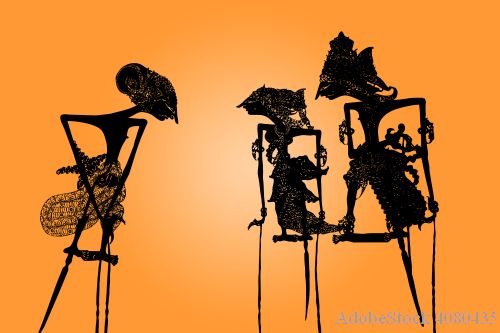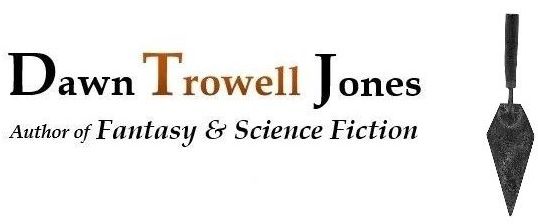 The Matrix: Resurrections was my Happy New Year treat. [Spoilers alert!] The irony is not lost on me, and I don’t really care. No, I do care, but my husband was pretty lukewarm about watching it. To put this in context, when we first moved in together in 2001, we each came brandishing our own DVD copies of the original The Matrix. Just to be safe, one of us had the VHS as well, though I can never remember who. I confess I did not love the second and third in the series. I barely remember what happened except generally, and I found the blinding of Neo a little too reminiscent of Paul’s in Frank Herbert’s Dune. And, perhaps strangely, I thought Reloaded and Revolutions were a little “off message” from what was so powerful in the original.
The Matrix: Resurrections was my Happy New Year treat. [Spoilers alert!] The irony is not lost on me, and I don’t really care. No, I do care, but my husband was pretty lukewarm about watching it. To put this in context, when we first moved in together in 2001, we each came brandishing our own DVD copies of the original The Matrix. Just to be safe, one of us had the VHS as well, though I can never remember who. I confess I did not love the second and third in the series. I barely remember what happened except generally, and I found the blinding of Neo a little too reminiscent of Paul’s in Frank Herbert’s Dune. And, perhaps strangely, I thought Reloaded and Revolutions were a little “off message” from what was so powerful in the original.
Resurrections, however, wasn’t off-message at all. I found myself right back where I started, in a good way, not just because of all the instant-replays peppered throughout – to lengthen run-time maybe? – I don’t know, but a fascinating thing happened when I first experienced this story, and now it has happened again: I zoned out. I completely tranced while watching this film, which was part of what I loved about the first one back in 1999, that it’d had that effect. Back then, I almost always saw movies by myself, and I almost never watched a movie more than once at the theater, mainly because of cost (though a friend at the ticket counter sometimes let me in for free). The fact this movie inspired me to go four times still impresses me.
 What I loved most was its uncanny and unique ability to allow the viewer to enjoy multiple interpretive modes, switching between them in real time. I was studying software development at the time, had no cell phone. After having watched the movie over and over, I decided to visit some friends in Charleston (from Columbia), drove the whole two hours dying to tell them about this amazing new film. When I got there, I was hardly through the door when they both came at me with, “Dude, I have got to tell you about this movie we saw last night. It was the stupidest thing ever. We just can’t get over it!” And I remember laughing as I put my bags down, so happy to be with them. “Really? I saw one too. Loved mine.” “Cool, cool, but listen, let me tell you about ours first. It was the worst. It’s called The Matrix, had this whole thing about people turning into batteries or some stupid nonsense like that. Really bad…. But, yeah, so tell us about yours?”
What I loved most was its uncanny and unique ability to allow the viewer to enjoy multiple interpretive modes, switching between them in real time. I was studying software development at the time, had no cell phone. After having watched the movie over and over, I decided to visit some friends in Charleston (from Columbia), drove the whole two hours dying to tell them about this amazing new film. When I got there, I was hardly through the door when they both came at me with, “Dude, I have got to tell you about this movie we saw last night. It was the stupidest thing ever. We just can’t get over it!” And I remember laughing as I put my bags down, so happy to be with them. “Really? I saw one too. Loved mine.” “Cool, cool, but listen, let me tell you about ours first. It was the worst. It’s called The Matrix, had this whole thing about people turning into batteries or some stupid nonsense like that. Really bad…. But, yeah, so tell us about yours?”
Very quickly I learned that not everyone was going to have the same experience of this movie.
 Decades later, a month ago, I watched the original again, and this time something new struck me, if you can believe it. I was certainly aware of the film’s religious/philosophical message that an objective reality may (or may not?) lie behind a veil (Buddhist, Platonic…?). Although I’d noticed the carnage before, and on the surface it was always disturbing to think my heroes were okay with mass slaughter, I understood that they had to kill because the Agents, particularly Agent Smith, could infiltrate (the digital-projection of) any person still locked inside the Matrix, and any attempt to spare the innocent merely got one killed at their co-opted hands. Fine, the old “if you’re not one of us, you’re one of them” motif. But innocent people were still being shot and beaten to death by my heroes. This last time, as I watched the original film, it hit me that my heroes were zealots. From outside their tight sphere of those “in the know,” they looked like killers on a rampage. And they were killers, even within the virtual world of the Matrix, because the “body cannot live without the mind.” Morphius told us so. For all intents and purposes within the context of this story, those innocents were actually murdered: men, women, and children going through their ordinary (though virtual) lives. The Matrix, among its many interpretations, has been an allegory for zealotry. This was a rather harsh and sobering view for me. I did not like it. But it added yet another dimension to a story that’s practically bursting at the seams.
Decades later, a month ago, I watched the original again, and this time something new struck me, if you can believe it. I was certainly aware of the film’s religious/philosophical message that an objective reality may (or may not?) lie behind a veil (Buddhist, Platonic…?). Although I’d noticed the carnage before, and on the surface it was always disturbing to think my heroes were okay with mass slaughter, I understood that they had to kill because the Agents, particularly Agent Smith, could infiltrate (the digital-projection of) any person still locked inside the Matrix, and any attempt to spare the innocent merely got one killed at their co-opted hands. Fine, the old “if you’re not one of us, you’re one of them” motif. But innocent people were still being shot and beaten to death by my heroes. This last time, as I watched the original film, it hit me that my heroes were zealots. From outside their tight sphere of those “in the know,” they looked like killers on a rampage. And they were killers, even within the virtual world of the Matrix, because the “body cannot live without the mind.” Morphius told us so. For all intents and purposes within the context of this story, those innocents were actually murdered: men, women, and children going through their ordinary (though virtual) lives. The Matrix, among its many interpretations, has been an allegory for zealotry. This was a rather harsh and sobering view for me. I did not like it. But it added yet another dimension to a story that’s practically bursting at the seams.
 When viewing Resurrections, I noticed the same faith-based zealotry (as it would appear to ordinary people on the inside, but not the ones “in the know”, to whom these acts are rational and necessary). Of course, again, our heroes are trying to free themselves and everyone else from a vast virtual cage that is the Matrix, where people serve as a power source for sentient AIs. But for quite a few of these trapped individuals, “freedom” comes in the form of real death – in both worlds – unless someone or something (the AIs!) decides to reconstruct them and reinsert them back into the Matrix. Well, that’s lovely, and we learn that it can be done, but in the “real” world (behind the veil), except for Neo and Trinity who are special, that’s not what will happen. The AIs will simply liquefy the victims’ “real world” bodies and feed them to newly-hatched humans – plug the babies into the Matrix and start anew. Problem solved. They don’t have to explain a thing. As far as those still in the Matrix are concerned, the deaths of the innocent came at the hands of zealots they don’t understand. Though Neo does not shoot anyone in Resurrections, to stop him and Trinity, the AIs send humans flying out windows, and there are still crashes and collateral damage galore.
When viewing Resurrections, I noticed the same faith-based zealotry (as it would appear to ordinary people on the inside, but not the ones “in the know”, to whom these acts are rational and necessary). Of course, again, our heroes are trying to free themselves and everyone else from a vast virtual cage that is the Matrix, where people serve as a power source for sentient AIs. But for quite a few of these trapped individuals, “freedom” comes in the form of real death – in both worlds – unless someone or something (the AIs!) decides to reconstruct them and reinsert them back into the Matrix. Well, that’s lovely, and we learn that it can be done, but in the “real” world (behind the veil), except for Neo and Trinity who are special, that’s not what will happen. The AIs will simply liquefy the victims’ “real world” bodies and feed them to newly-hatched humans – plug the babies into the Matrix and start anew. Problem solved. They don’t have to explain a thing. As far as those still in the Matrix are concerned, the deaths of the innocent came at the hands of zealots they don’t understand. Though Neo does not shoot anyone in Resurrections, to stop him and Trinity, the AIs send humans flying out windows, and there are still crashes and collateral damage galore.
For me, Resurrections hearkens back to its roots and works especially well during the long stretches of slow action in the mundane reality of the Matrix, which a few of the movie’s critics have complained about and seemingly dismissed. Wachowski’s incredible close-up detail mixed with haunting, stylized beauty (the crisp clouds outside windows, hidden lace, etc.) along with hypnotic slow-shots and silences – basically, an odd sort of pacing to the story and visuals – allowed my mind to split into simultaneous watcher and experiencer modes. The scenes and story elements that I maybe would describe as extraneous, or silly, those became points of rest where I could slip off into my own thoughts. They became resting beats in the story. They say “ignore me” in the same way we ignore the trivial aspects of our everyday lives, suggesting our consciousness may be riding on a surface that hides something of vital importance. Yes, that’s deep, but that is the mystery and heart of The Matrix as a work of art. You might miss this experience if you watch the movie worrying about the plausibility of X or Y (because there are plausibility issues all over the place). Real life can be absurd too. I can come up with quite a few who-woulda-thunk-its since I turned 30, and onward to the present day, but hey, those things are still happening.
As much as the film pleased me, the hypnotic quality of the storytelling had me a little unnerved when combined with the idea that liberating people from their delusions may require a literal sacrifice of the deluded’s lives. Unlike in 1999, people today aren’t that far from acting on this way of thinking. But I’m thankful to the Wachowskis for their art, and glad Lana Wachowski et al. moved forward with this project, to show us if not who’s behind the curtain, at least the curtain, perhaps in a way unlike anything else out there.
 But the “who” that’s behind the curtain may not be who or what we think. Perhaps, when we get down to the wire, specificity is an illusion in itself, and truth becomes truth only when expressed in a representative form, as simulacra or a hyperreality, or… or….
But the “who” that’s behind the curtain may not be who or what we think. Perhaps, when we get down to the wire, specificity is an illusion in itself, and truth becomes truth only when expressed in a representative form, as simulacra or a hyperreality, or… or….
Uh, we’re all on the same page here, right?
No, of course not. What I’ve said is not clear. Mystery solved: The Matrix and The Matrix: Resurrections are relativist works. Faith-based literary works like the Bible are relativist works, too, or they wouldn’t work. That is why we’re able to read so much into them with so many defensible interpretations, and here, why fans of The Matrix hate to see its possibilities restricted to any single line. I will probably re-watch both movies, soon. I may agree with myself, or not. It doesn’t really matter, because it’s just a silly movie. I am free.
 As an aside almost, I must say, I loved that the two main characters were older, and I loved the little gobbets of meaning sprinkled everywhere – one can hardly keep up – sort of parading across the screen as the story progresses. Frankly, the fight scenes did nothing for me in this last installment, just another aspect of samsara, and I pretty much tuned them out. I loved that Neo and Trinity were able to recognize one another though Trinity could not see Neo’s true face. I loved their generosity of spirit towards one another. I loved that, as Neo was clearly exhausted by his life lived inside the Matrix, Trinity, who’d experienced marriage and children and a career (of value to her?), came back to Neo in middle age as the strong one. She’d carried her societal burdens with dignity, and now finished with them, has shaken them off, ready to begin again. Strong enough to carry him. Not an antagonism of genders, but cooperation, which can exist within an individual as much as between individuals. Beautiful, and rare to see in a film. A drink of fresh water. This was no accident.
As an aside almost, I must say, I loved that the two main characters were older, and I loved the little gobbets of meaning sprinkled everywhere – one can hardly keep up – sort of parading across the screen as the story progresses. Frankly, the fight scenes did nothing for me in this last installment, just another aspect of samsara, and I pretty much tuned them out. I loved that Neo and Trinity were able to recognize one another though Trinity could not see Neo’s true face. I loved their generosity of spirit towards one another. I loved that, as Neo was clearly exhausted by his life lived inside the Matrix, Trinity, who’d experienced marriage and children and a career (of value to her?), came back to Neo in middle age as the strong one. She’d carried her societal burdens with dignity, and now finished with them, has shaken them off, ready to begin again. Strong enough to carry him. Not an antagonism of genders, but cooperation, which can exist within an individual as much as between individuals. Beautiful, and rare to see in a film. A drink of fresh water. This was no accident.
I’d watch out for zealotry, though. And pied pipers. Adulthood is about being responsible for one’s choices, habits, and other acts, good or bad, whether one wishes to take responsibility for them or not. No joke. Doing adulthood well may be optional, but otherwise we’ve all been pretty much flung into it.
One more thing. Call me oblivious, but in this article (https://www.wired.com/story/the-matrix-resurrections-review-essay/), I was surprised to learn that novelist David Mitchell (along with Aleksandar Hemon) participated in the development of the script to Resurrections. Apparently, Mitchell has worked with Lana Wachowski before on other projects, such as the movie adaptation of his book Cloud Atlas (here’s an interview with Mitchell on the topic, if you like, https://www.vulture.com/2021/12/david-mitchell-neo-fires-no-guns-in-matrix-resurrections.html). Totally unaware of this connection, I’d just finished re-reading Cloud Atlas (and am reading Jung’s Synchronicity, too, slowly, for what it’s worth). Like in The Matrix, the characters in Mitchell’s Cloud Atlas talk about free will and predestination quite a bit, but along with about twenty million other topics.
These were my thoughts for today. My current project, like our cats, wants my full attention. I may not post next month. Not entirely sure what this story wants to be, but I’m looking forward to finding out! You take care of yourself out there. As always, I’m rooting for you. Happy New Year!
